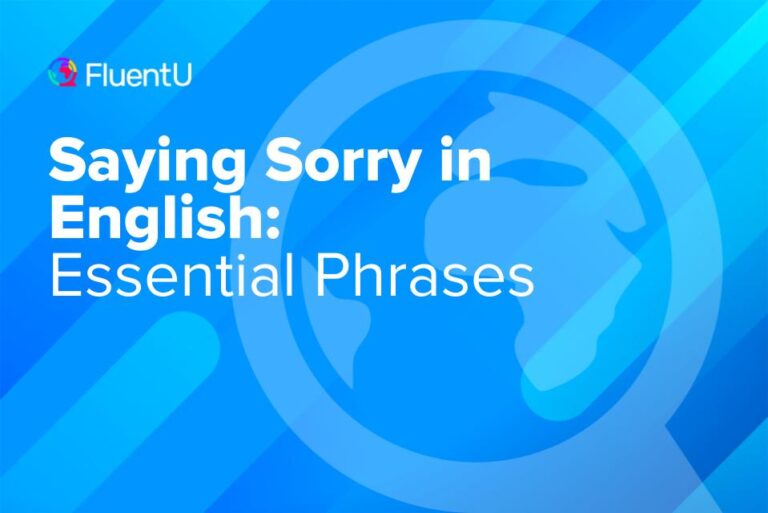How to Describe a Person in English with 154 Common Terms

Do you ever find yourself searching for the right words to describe someone? Even us native speakers sometimes find it hard to talk about ourselves in English. Whether you’re talking about a friend’s appearance, a colleague’s personality or even describing yourself, the right words make all the difference.
Today we’ll explore over 150 words to make your descriptions more natural and accurate—perfect for conversations, writing and even business.
Download: This blog post is available as a convenient and portable PDF that you can take anywhere. Click here to get a copy. (Download)
What Are the Different Ways to Describe People?
Let’s say you want to describe a friend, a family member or a boss. You will probably use a few kinds of information.
- Appearance is what someone looks like on the outside.
- Mannerisms are the ways that someone acts or behaves.
- Character traits are the little things that make someone who they are. In other words, they make up someone’s personality.
- Emotions are what someone feels at a certain time.
In this post, we’ll go over useful vocabulary for describing all of these.
You will see this vocabulary used a lot in conversations and online.
1. Describing Someone’s Appearance
To describe someone’s appearance, you will often use adjectives. An adjective is a kind of word that describes a noun (a person, place or thing).
Here are some words and phrases you can use to describe a person’s appearance.
Some of them are synonyms, or words that mean almost or exactly the same thing.
Knowing more than one way of saying something is very helpful when describing people.
Describing a face
| Face | Eyes | Nose | Eyebrows |
|---|---|---|---|
| round | hooded | humped | shaggy |
| oval | round | pointed | thin |
| square | almond-shaped | sharp | plucked |
| triangle | deep set | straight | arched |
| long | close set | snub | soft arch |
| freckled | wide set | aquiline | high arch |
| rosy | turned up | thick | |
| puffy | crooked | upwards |
| Hair Texture | Hair Color | Hair Length | Facial Hair |
|---|---|---|---|
| straight | blonde | short-haired | has a beard |
| wavy | dark-haired | long-haired | has a moustache |
| curly | red-haired | bald (no hair) | has a goatee |
| frizzy |
Describing a body
| Weight | Height |
|---|---|
| well-built | tall |
| full-bodied | short |
| curvy | petite |
| heavy | pint-sized |
| overweight | |
| thin | |
| slim | |
| skinny |
| Shoulders | Legs | Arms |
|---|---|---|
| broad | shapely | beefy |
| delicate | thick | powerful |
| sloping | feminine | muscular |
| narrow | scrawny | skinny |
| rounded | sinewy | toned |
| well-defined | athletic | ripped |
| strong | crooked | slender |
| bulky | sleek | thick |
| Overall Appearance | Style of Dress |
|---|---|
| good-looking | well-dressed |
| attractive | stylish |
| beautiful | trendy |
| pretty | unfashionable |
| gorgeous | frumpy |
| handsome | |
| plain-looking | |
| not much to look at |
2. Describing Someone’s Mannerisms
Someone’s mannerisms are the way they act or speak. When you speak, do you move your arms a lot?
Do you touch your hair or bite your lip? All these things are mannerisms.
Since mannerisms are usually actions, they are often described by phrases with verbs (action words).
You can add the person’s name or a pronoun before it (he, she, they…).
For example, “He taps his fingers.”
Here are some common mannerisms you might use to describe people.
FluentU takes authentic videos—like music videos, movie trailers, news and inspiring talks—and turns them into personalized language learning lessons.
You can try FluentU for free for 2 weeks. Check out the website or download the iOS app or Android app.
P.S. Click here to take advantage of our current sale! (Expires at the end of this month.)

3. Describing Someone’s Character
A person’s character is their personality, who they are on the inside.
When you talk about someone, you might mention what they are like as a person.
Here are some ways to do that.
| Friendly | Mean | Respectful | Disrespectful |
|---|---|---|---|
| nice | unpleasant | polite | rude |
| kind | nasty | well-mannered | impolite |
| pleasant | vicious | considerate | vulgar |
| warm | cruel | thoughtful | obscene |
| Smart | Not Smart | Gets Upset Easily | Relaxed |
|---|---|---|---|
| clever | dense | hot-headed | calm |
| intelligent | dumb | hot-tempered | laid-back |
| sharp | stupid | moody | easy-going |
| wise | not too bright | temperamental | carefree |
| Extroverted | Introverted | Funny | Doesn't Laugh a Lot |
|---|---|---|---|
| outgoing | quiet | hilarious | serious |
| sociable | soft-spoken | witty | reserved |
| approachable | shy | silly | boring |
| Tries Big Things | Arrogant | Modest |
|---|---|---|
| ambitious | conceited | humble |
| determined | stuck up | unpretentious |
| goal-oriented | self-absorbed | unassuming |
| resourceful |
4. Describing Someone’s Feelings
People’s feelings are always changing. You can be happy one moment, and then hear some bad news and become sad.
You always know how you feel, but it isn’t always easy to tell how someone else is feeling.
You can look at how someone is speaking or even how they’re sitting to understand how they feel.
When you’re not sure how someone feels, you can say they might be feeling something.
You can also say someone looks like they’re feeling a certain way. These phrases show that you might be wrong.
For example, you can say, “I’m mad” when you’re talking about yourself. But you might say “He looks mad,” when you’re talking about another person.
This makes sense if this person is yelling into his phone with his face red and his fists clenched (all signs that someone could be mad!).
You can use these words to talk about how someone is feeling, how they were feeling before or how they might feel in the future.
| Happy | Sad | Nervous | Relaxed |
|---|---|---|---|
| elated | unhappy | anxious | calm |
| exuberant | down | stressed | serene |
| cheerful | melancholy | agitated | tranquil |
| delighted | miserable | ||
| ecstatic | out of sorts |
| Tired | Well-rested | Mad | Bored |
|---|---|---|---|
| exhausted | energetic | angry | disinterested |
| worn out | refreshed | furious | inattentive |
| fatigued | invigorated | fed up |
Why Learn How to Describe a Person?
We describe people all the time. For example, you might tell your friends what your boss is like.
You might tell your sister what that cute guy you saw looks like.
Even outside of everyday conversations, it’s very useful to know how to describe people.
Descriptions are used a lot in books, in articles and in other kinds of communication in English.
Reading or hearing a description of someone can give you a better idea of what they look like or act like.
Descriptions are also useful in the business world, often crucial to conversations and presentations at work.
The Importance of Being Polite When Describing a Person
Some ways of describing people are polite and respectful.
Take the compliments in this video, for example. A native English speaker drives around town saying nice things to people about the way that they look!
Of course, other ways to describe people can be considered rude.
Use judgment and common sense. Think about how you would feel if you heard someone using the same words to describe you.
If you’re ever stuck trying to think of a different way to say a word, look it up in a thesaurus like this one.
A thesaurus lists both synonyms and antonyms (words that have an opposite meaning). It’s a great way to discover new words and more ways of describing people.
Another good thesaurus resource is Visual Thesaurus, which is like a thesaurus that’s also a map. It shows you the connections between related words. This is great for helping you choose the very best adjective to describe someone.
So, how would you describe yourself?
Download: This blog post is available as a convenient and portable PDF that you can take anywhere. Click here to get a copy. (Download)
And One More Thing...
If you like learning English through movies and online media, you should also check out FluentU. FluentU lets you learn English from popular talk shows, catchy music videos and funny commercials, as you can see here:
The FluentU app and website makes it really easy to watch English videos. There are captions that are interactive. That means you can tap on any word to see an image, definition, and useful examples.
For example, when you tap on the word "searching," you see this:
Learn all the vocabulary in any video with quizzes. Swipe left or right to see more examples for the word you’re learning.

FluentU helps you learn fast with useful questions and multiple examples. Learn more.
The best part? FluentU remembers the vocabulary that you’re learning. It gives you extra practice with difficult words—and reminds you when it’s time to review what you’ve learned. You have a truly personalized experience.
Start using the FluentU website on your computer or tablet or, better yet, download the FluentU app from the iTunes or Google Play store. Click here to take advantage of our current sale! (Expires at the end of this month.)














